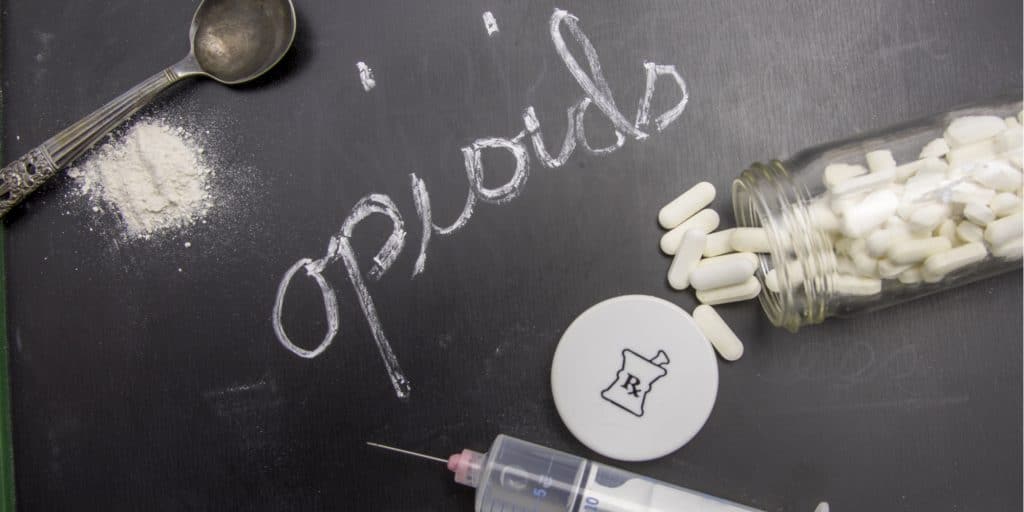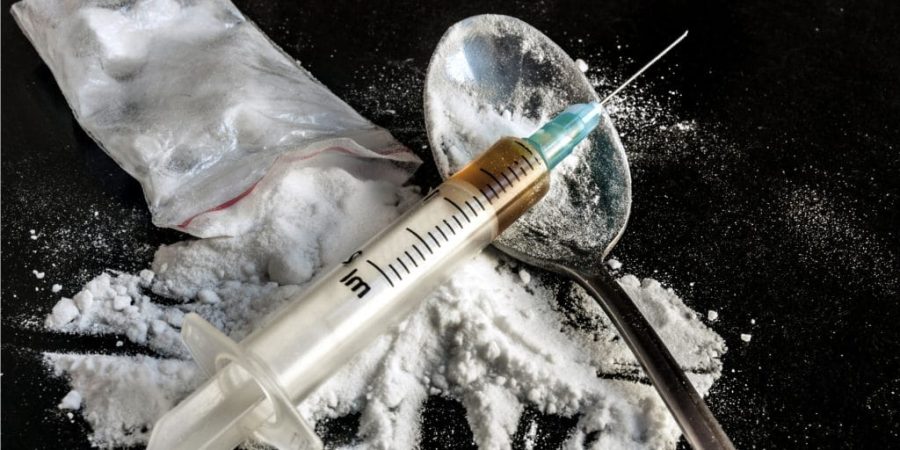
Opioid use has evolved to include several synthetic variants, which are now more commonly used than traditional prescription opioids. Among them are fentanyl and a new drug labeled U-47700, known on the streets as “pink drug.” Usually when taking opioids, much less of a synthetic opioid is required to cause comparable effects of naturally derived opioids. This makes dosages difficult to interpret and is one of the reasons why synthetic opioid overdoses are so common.
The opioid crisis in the United States is an ongoing problem. While a decline in opioid overdose deaths was noted in 2017, stressors caused by the coronavirus pandemic thrust many Americans either back into opioid use, or made them willing to try opioids for the first time. Since synthetic opioids contribute to a large portion of today’s opioid supply, it is possible that any illegally obtained opioid contains drugs like fentanyl or U-47700.
Table of Contents
What Is the Pink Drug?

The pink drug, or U-47700, was originally developed in a lab by the pharmaceutical company Upjohn in an effort to produce a new pain reliever. Also known as pinky or U4, the pink drug is chemically similar to morphine but estimated to be about eight times stronger. In terms of appearance, the name “pink” can be misleading. In reality, the substance can be light pink or chalky white in color.
Ultimately, U-47700 was never approved for human consumption. However, the chemical recipe for the drug called pink has been discovered by drug traffickers on the black market and is being distributed illegally. In fact, most of the pink drug supply can be traced back to Asian countries such as China, where there are thought to be numerous illegal laboratories.
Novel Synthetic Opioids (NSOs)
U-47700 is part of a drug group called novel synthetic opioids (NSOs). Most of these substances were studied in the 1960s or 1970s but deemed unfit for human consumption. Therefore, NSOs like the pink drug are often dubbed “opioid research chemicals” in reference to their history as potential medications. However, they do not have any current medicinal purpose.
Currently, U-47700 and similar substances are being used in several different ways. The pink drug is being sold either as a standalone product, as an additive to heroin (pink heroin), or to formulate fake pain pills or other prescriptions. This means that many people who take the drug U-47700 do not realize they’re taking it, a trend noted in those who accidentally ingest illegal fentanyl. Naturally, not knowing which substances were taken makes treating an overdose much more challenging.
Signs of Pink Drug Use

Prior to 2016, the synthetic pink drug was able to evade detection by the DEA because it was not specified as a drug. However, after nearly 50 overdose deaths in the 2015-2016 time frame, U-47700 was deemed a Schedule I substance in November of 2016.
Symptoms of U-47700 use are similar to that of other opioids. This includes both the “high” feeling of euphoria and relaxation as well as the toxic reactions. Pink drug also carries a high risk of tolerance, dependence, and addiction. Other side effects of pink use include:
- Trouble breathing
- Pinpoint pupils
- Itching
- Severe sedation
- Numbness
- Seizures
- Constipation
- Psychosis
- Overdose
Even small doses of U-47700 can result in an opioid overdose. Signs of opioid overdose include:
- Shallow breathing
- Blue-colored lips
- Clammy skin
- Gurgling noises
- Vomiting
- Potentially life-threatening breathing difficulties
- Unconsciousness
- Coma
- Death
A pink drug overdose may respond to the opioid antagonist Narcan (naloxone). However, it may take several doses to reverse the effects of U-47700. Unfortunately, the pink drug has been found in drugs like fake Xanax and other prescription medications. In some of these scenarios, the user may not even realize that they’ve taken an opioid. In times like these, it is critical to pay attention to drug overdose symptoms and to be honest with medical professionals.
Finding Help for Opioid Addiction in Nevada

The “new” drug called pink also made its way into Nevada, as indicated by a 2017 drug bust in Reno. And given the rate at which illicit laboratories can produce U-47700 and its analogs, these synthetic opioids are here to stay. The best thing you can do is avoid illegal drug use. And if you or someone you know could benefit from addiction treatment, the Veteran’s Journey Recovery Center can help.
Addiction Treatment in Las Vegas, Nevada
Opioid use can swiftly result in physical dependence as well as psychological addiction. Because of this, opioid treatment is a vital part of recovery. Rather than trying to go it alone, medical professionals advise enrolling in a residential treatment program in order to fully focus on recovering.
At the Veteran’s Journey Recovery Center in Las Vegas, Nevada, we realize that committing to addiction treatment is a big step in acknowledging drug addiction. Rest assured that we are committed to you before, during, and after treatment at our facility. At VJRC, you will be fully supported in your transition to recovery.
To get started on your recovery from drug use, contact one of our admissions specialists at 888-828-2623, or use our confidential online form to ask us anything that comes to mind.
You can take your life back from opioid addiction. And the Veteran’s Journey Recovery Center can help.
The post Pink Drug (U-47700): The New Synthetic Opioid in Nevada appeared first on VJRC.
Source
Original Author: Veteran’s Journey Recovery Center

